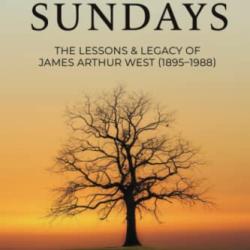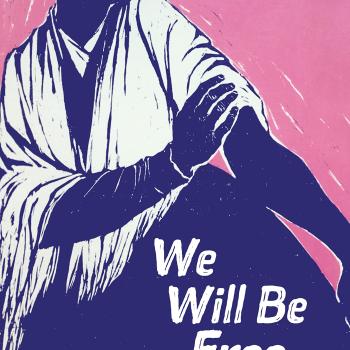Over Christmas break, I had the incredible privilege of visiting the Middle East for the first time. I spent a week and a half with family who live in Jordan. (We also spent three days visiting Bethlehem and Jerusalem, which will be the subject of a future post.)
I had been abroad before, for decent amounts of time, in England, France, Japan, and Italy. But it had been more years than I am willing to admit publicly in this post. Let’s just say I had to get my passport renewed because I had let it expire. So it was good for this American historian to be reminded that not only is the historian’s aphorism true that “the past is a foreign country; they do things differently there,” but foreign countries are also foreign countries. They do things differently there. Seeing an alternative makes the familiar strange.
Late in the trip I found myself thinking, “He knows not his country who knows only his country.” I asked my family if they could remember who said it, and they could. To my chagrin, it was Rudyard Kipling: a thoughtful writer in this respect, but also a notorious imperialist who believed his culture superior to others. (Precisely, the quotation turned out to be, “And what should they know of England who only England know?”)
During my visit, I wrestled with this concept of whether difference necessarily implies superiority or inferiority. Processing the differences in the Middle East was like drinking from a firehose—an odd metaphor for a desert, I admit. It turns out that my brain runs a background program that kicks in when I am immersed in a new culture. It rapidly observes, compiles, and sorts the new information, and then attempts to make sense of it by relating these new facts both to each other and to other things I know. I got tired more easily just by existing in a very different space because my mind was working overtime. Here are some things I observed about Arab, and specifically Jordanian culture:
Traffic
The first one became apparent in the first ten minutes. Being driven along the main highway that connects Queen Alia International Airport to the capital city of Amman, I realized that the lane markers were more of a suggestion. I asked about this and was informed that I was on the road in all of Jordan where lanes were observed the most. Yikes. I’m a fairly assertive, efficiency-minded driver here in the States, but this was next level. Of course, come to find out, there were unwritten rules for how to drive in that situation and they were second nature to everyone on the road, just like what is and isn’t appropriate on a Texas road is second nature to me.
Product Labeling
Now here’s a difference I would code as straight-up superiority: In Jordan, all perishable products are labeled with not only an expiration/sell by/best by date, but also with the original production date. Be still my germaphobic heart. Why don’t we do this in the U.S.? A family member agreed that Jordan has the superior system, and that it was such common sense that only lobbyists could account for its neglect here. When I asked a Jordanian friend about this, he replied, “In Jordan, the corporations are controlled by the government, whereas in the U.S., the government is controlled by the corporations.” An overstatement in both cases to be sure, but one with some merit, and inasmuch as Jordan is a relatively, but not completely free society, arguably a wash.
Here it’s worth noting that I could actually go out shopping on my own because almost every sign in Jordan is in both English and Arabic, and, at least in the capital, most store clerks also speak English. While Jordan’s status as a former British colony is of course in part responsible for this phenomenon, its continuance struck me as an extraordinary practice of hospitality.
Head Coverings

Another difference, and one I expected to find, was that most women wore head coverings, or hijabs. In Jordan, this is not required, even of Muslim women. More traditional Muslim women additionally wear a full burka or, more commonly, a loose-fitting, long-sleeved, ankle-length dress. The vast majority in Amman, though, wear high-fashion but conservative western clothing plus a hijab, and more makeup than is average in the U.S., at least among my friends and colleagues. A minority of Muslim women don’t wear a hijab at all, and the small portion of Christian women—Arab or Western—don’t wear one either.
I went back and forth about how I felt about the prevalence of the hijab. In one of my women’s history courses, I teach a cartoon that depicts a Western woman in a bikini and sunglasses passing a woman in a full burka on a beach. The Western woman thinks, “Everything covered except her eyes: what a cruel, male-dominated culture!” The Arab woman thinks, “Nothing covered except her eyes: what a cruel male-dominated culture!” The cartoon has a point. The sexualization of women in American culture is not liberating. Modesty can be a form of self-respect, as historian Ula Taylor argues in her analysis of the Black American Nation of Islam, The Promise of Patriarchy. Plus, standards of dress and fashion in general vary by culture.
Men and women in the U.S. dress and style their hair and face differently on average, to the extent that you would be almost always right in your guess of male and female even if you could not perceive body shape or facial structure. Difference itself is not inherently oppressive. These unwritten codes are roughly balanced; men and women face different cultural expectations in dress, but they both face expectations. And, as in Jordan, these expectations are (in most cases) not legally mandated.
What got to me in the end, though, was the realization that if you plucked up an average man off the sidewalk in Amman and plopped him down in the United States, you would not be able to identify him as either Muslim or foreign. But if you plucked up an average woman and did likewise, you would. Jordanian women faced strong cultural pressure to enact an additional modesty standard for which men had no equivalent.
This reminded me in the American context of the fact that most complementarian Christian spaces aren’t actually complementary: it is not that women are permitted certain activities and denied others, while men are permitted a different set of activities and denied a different set of ones. (This alternative pattern held, for example, for nineteenth-century Shaker religious communities where men and women were assigned different but complementary daily tasks but shared governance.) Rather, the “complementarity” in these contemporary American spaces consists in women facing more restrictions, not simply different ones.
Call to Prayer
Finally, my family reported that many Western Christians experience the Muslim call to prayer that sounds through the streets of Jordan five times a day as spiritually dark or oppressive. They find the proliferation of Muslim theology through the airwaves to be a sign of the overwhelming predominance, and even enforcement, of what they consider to be false religion.

I admit I experienced this phenomenon differently. Perhaps because of my Anglican affiliation, I appreciate the practice of set times of formal prayer throughout the day, which for Christians derives from our monastic tradition. Indeed, the call to prayer made me contemplate the potential benefits of a more formally religious culture, a stance frequently anathema among American religious historians, who rightly acknowledge all the many ways this has historically gone wrong. What I mean is that not only in the call to prayer, but also in certain patterns of Arabic speech, God is formally acknowledged and brought to mind throughout the day, which has potentially beneficial effects on the culture at large. Additionally, it is simply a beautiful cultural art form. At the very least, from a Christian point of view, this practice can be redeemed: every time I heard it, I said the Lord’s Prayer.
All of this was swimming in my head when we then crossed the Jordan to visit Bethlehem and Palestine. Most American Christians visiting the Holy Land fly into Tel Aviv; I crossed with the Palestinians over the King Hussein/Allenby Bridge. Likewise, most American Christian visitors encounter the cultural differences of Israel immediately and therefore juxtapose them first with American culture. My time in Jordan meant I automatically juxtaposed both the West Bank and Israel with the wider Arab culture I had first encountered. I will share the reflections this produced in a second post.




